3 Yoshitomo Nara Missing in Action acrylic on cotton mounted on FRP diameter 180 cm (70 7/8 in.) Executed in 2005.
Provenance Marianne Boesky Gallery, New York Acquired from the above by the present owner Exhibited New York, Marianne Boesky Gallery, Yoshitomo Nara 9 September - 8 October 2005 Literature Noriko Miyamura and Shinko Suzuki, eds., Yoshitomo Nara The Complete Works, San Francisco, 2011, cat. no. P-2005-011., p. 199 (illustrated) Catalogue Essay The girl in Yoshitomo Nara’s Missing in Action, executed in 2005, exhibits a troubled expression emblematic of the artist, creating a statement of defiant maturity mingled with childish petulance. Her features bear the hallmarks of Nara’s pictorial style, including the thin-lined red mouth, the two dots for a nose and the broad expansive pale forehead. These traits are characteristic of babies and young children and therefore serve to emphasise the figure’s juvenility, establishing a striking contrast with the strong piercing gaze emanating from her gleaming purple eyes. Her stance is obstinate, with the sleeves of her dress drawn over her hands and her feet firmly fixed to the ground, as if determined to remain anchored there. Nara adopts a simplistic approach to figuration, using the minimum number of lines necessary to render the outline of her body, allowing the attention to focus upon the girl’s unsettling countenance and the relationship between his protagonist and her surroundings. The sparkling intricate background of Missing in Action deviates from Nara’s earlier treatment of similar subjects. Hues of green, orange and blue arise intermingled with the predominant deep purple of the setting, reminiscent of the celestial firmament or perhaps the legendary class of yokai, the supernatural spirits prevalent in Japanese folklore. This is one of the notable differences and developments when compared to Nara’s 1995 painting Missing in Action, where the girl is presented against a stark monochrome backdrop and from closer quarters. Nara describes the very process of painting in similarly cosmic terms, as he recounts ‘standing in front of the canvas sometimes felt like traveling on a voyage in outer space – a lonely little spacecraft floating in the darkness of the void. My spaceship could go anywhere in this fantasy while I was painting, even to the edge of the universe’ (Yoshitomo Nara Nobody’s Fool, Yoshitomo Nara Complete Works, 2011). In the present work, the interaction between the figure and the elaborate world around her also has deeper implications for our understanding of the girl’s consciousness and perception. Nara’s careful use of the same purple which swirls around the canvas for the execution of the eyes suggests that we may be viewing her internal subconscious, the child’s isolation physically manifesting itself for the viewer to read and interpret. It is frequently commented that an overriding feeling of loneliness pervades much of the artist’s work, particularly in reference to his iconic studies of young girls and dogs. There is, however, an accompanying sense of tenacious and wilful independence that prevents his characters from being interpreted in a straightforward manner. We, as a viewer, are therefore held entranced by the figure in Missing in Action and her simultaneously entreating and recalcitrant gaze, nostalgically identifying in ourselves the contradictory emotions which characterise childhood. ‘His work attracts many people, because they recognise their precious inner solitude within it, a solitude which has often been long lost’ (Banana Yoshimoto ‘The World of Nara-kun’, Yoshitomo Nara Complete Works, 2011). Similarly to Antoine de Saint-Exupéry’s Le Petit Prince, Nara juxtaposes childlike innocence with the knowledge of an adult. Saint-Exupéry acknowledges the connection, after all ‘All grown-ups were once children, though few of them remember it’ (Antoine de Saint-Exupéry, The Little Prince, 1943). Nara takes influence from such illustrations, inviting the onlooker to reconnect with their inner child. The series of works entitled Missing in Action ser
3 Yoshitomo Nara Missing in Action acrylic on cotton mounted on FRP diameter 180 cm (70 7/8 in.) Executed in 2005.
Provenance Marianne Boesky Gallery, New York Acquired from the above by the present owner Exhibited New York, Marianne Boesky Gallery, Yoshitomo Nara 9 September - 8 October 2005 Literature Noriko Miyamura and Shinko Suzuki, eds., Yoshitomo Nara The Complete Works, San Francisco, 2011, cat. no. P-2005-011., p. 199 (illustrated) Catalogue Essay The girl in Yoshitomo Nara’s Missing in Action, executed in 2005, exhibits a troubled expression emblematic of the artist, creating a statement of defiant maturity mingled with childish petulance. Her features bear the hallmarks of Nara’s pictorial style, including the thin-lined red mouth, the two dots for a nose and the broad expansive pale forehead. These traits are characteristic of babies and young children and therefore serve to emphasise the figure’s juvenility, establishing a striking contrast with the strong piercing gaze emanating from her gleaming purple eyes. Her stance is obstinate, with the sleeves of her dress drawn over her hands and her feet firmly fixed to the ground, as if determined to remain anchored there. Nara adopts a simplistic approach to figuration, using the minimum number of lines necessary to render the outline of her body, allowing the attention to focus upon the girl’s unsettling countenance and the relationship between his protagonist and her surroundings. The sparkling intricate background of Missing in Action deviates from Nara’s earlier treatment of similar subjects. Hues of green, orange and blue arise intermingled with the predominant deep purple of the setting, reminiscent of the celestial firmament or perhaps the legendary class of yokai, the supernatural spirits prevalent in Japanese folklore. This is one of the notable differences and developments when compared to Nara’s 1995 painting Missing in Action, where the girl is presented against a stark monochrome backdrop and from closer quarters. Nara describes the very process of painting in similarly cosmic terms, as he recounts ‘standing in front of the canvas sometimes felt like traveling on a voyage in outer space – a lonely little spacecraft floating in the darkness of the void. My spaceship could go anywhere in this fantasy while I was painting, even to the edge of the universe’ (Yoshitomo Nara Nobody’s Fool, Yoshitomo Nara Complete Works, 2011). In the present work, the interaction between the figure and the elaborate world around her also has deeper implications for our understanding of the girl’s consciousness and perception. Nara’s careful use of the same purple which swirls around the canvas for the execution of the eyes suggests that we may be viewing her internal subconscious, the child’s isolation physically manifesting itself for the viewer to read and interpret. It is frequently commented that an overriding feeling of loneliness pervades much of the artist’s work, particularly in reference to his iconic studies of young girls and dogs. There is, however, an accompanying sense of tenacious and wilful independence that prevents his characters from being interpreted in a straightforward manner. We, as a viewer, are therefore held entranced by the figure in Missing in Action and her simultaneously entreating and recalcitrant gaze, nostalgically identifying in ourselves the contradictory emotions which characterise childhood. ‘His work attracts many people, because they recognise their precious inner solitude within it, a solitude which has often been long lost’ (Banana Yoshimoto ‘The World of Nara-kun’, Yoshitomo Nara Complete Works, 2011). Similarly to Antoine de Saint-Exupéry’s Le Petit Prince, Nara juxtaposes childlike innocence with the knowledge of an adult. Saint-Exupéry acknowledges the connection, after all ‘All grown-ups were once children, though few of them remember it’ (Antoine de Saint-Exupéry, The Little Prince, 1943). Nara takes influence from such illustrations, inviting the onlooker to reconnect with their inner child. The series of works entitled Missing in Action ser
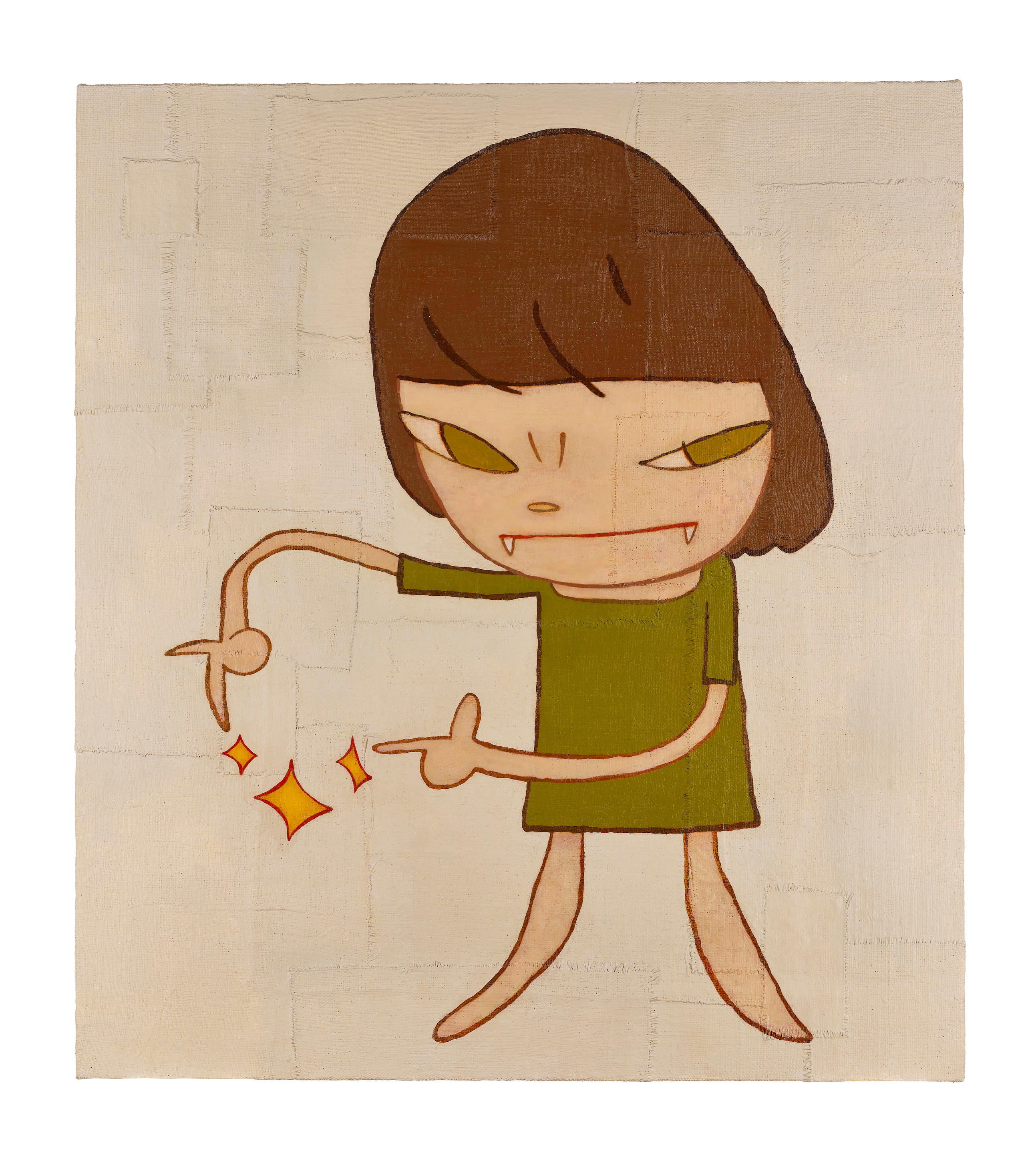
.jpg)

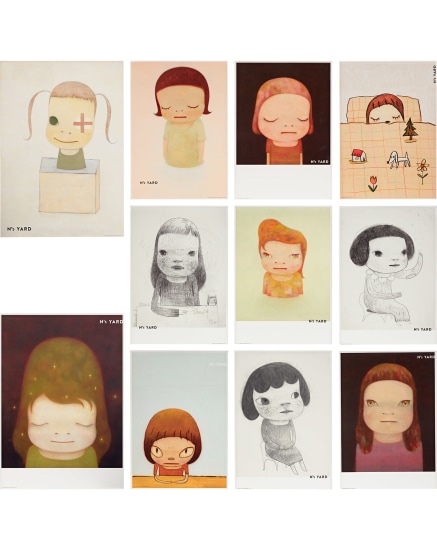

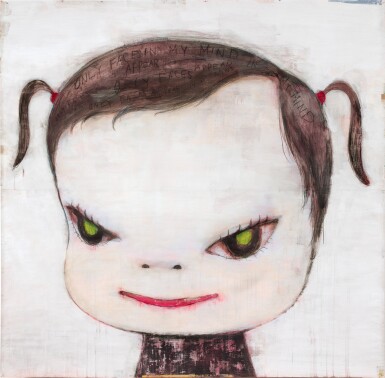
.jpg)

.jpg)
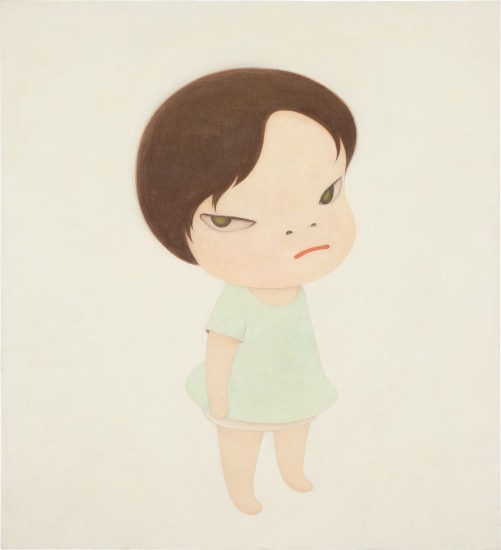
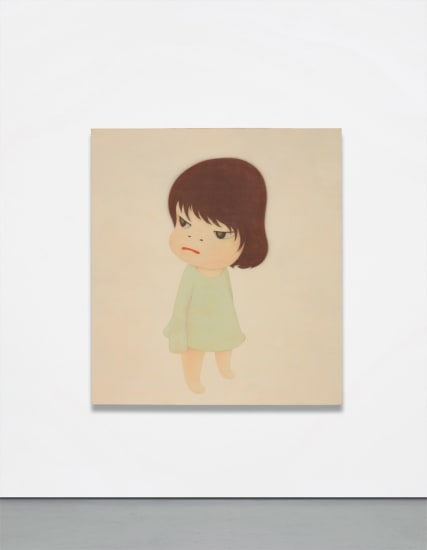
.jpg)


Try LotSearch and its premium features for 7 days - without any costs!
Be notified automatically about new items in upcoming auctions.
Create an alert